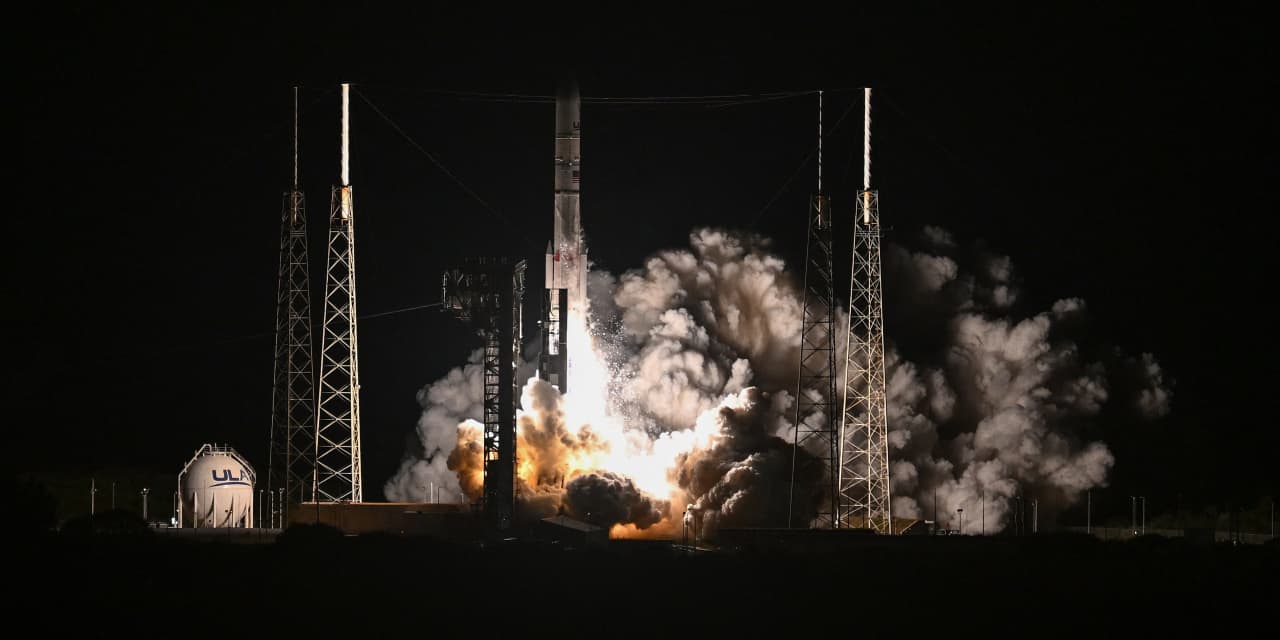SpaceX rival United Launch Alliance launched its new Vulcan rocket early Monday.
The rocket, which is the successor to ULA’s Delta IV and Atlas V rockets, is transporting the first commercial lunar lander on its journey to the surface of the moon, as well as a mission carrying cremated human remains into deep space.
The CERT-1 flight test marks an important milestone for United Launch Alliance, which was set up in 2006 as a joint venture between Boeing Co.
BA,
and Lockheed Martin Corp.
LMT,
Since then, the company’s Delta and Atlas rockets have been used to send more than 150 missions into orbit.
Related: These are the space stocks to keep an eye on in 2024
Vulcan lifted off from Space Launch Complex 41 at Cape Canaveral Space Force Station in Florida at 2:18 am ET. The Vulcan booster stage separated a few minutes later, sending the rocket’s Centaur upper stage on its journey to place Astrobotic Technology’s Peregrine lunar lander into orbit more than 220,000 miles above Earth, from where it will intercept the moon. The Peregrine spacecraft separated from the Centaur upper stage 51 minutes after launch.
“So far, this has been an absolutely beautiful mission,” said ULA CEO Tory Bruno during a livestream of the launch.
Astrobotic confirmed that it is receiving telemetry data from the Peregrine spacecraft about an hour into the mission. The Peregrine mission is part of NASA’s Commercial Lunar Payload Services initiative to deliver science and technology to the moon’s surface.
Peregrine, which is carrying NASA scientific instruments to study the lunar surface, is expected to land on the moon on Feb. 23, 2024.
Related: SpaceX IPO could come as soon as 2025 or 2026, says money manager Vijay Marolia
Centaur is also carrying a payload from Celestis Memorial Spaceflights into deep space. The Celestis mission is launching more than 200 flight capsules containing cremated remains, DNA samples and messages of greetings from clients worldwide into deep space, ULA said. Portions of the cremated remains of several “Star Trek” icons, including creator Gene Roddenberry and actors James “Scotty” Doohan and Nichelle Nichols, who played Lt. Nyota Uhura, are on the Enterprise Flight, as well as DNA from presidents George Washington, John F. Kennedy and Dwight D. Eisenhower, according to Celestis. The late presidents’ DNA is in hair samples, the Houston Chronicle reported.
A separate Celestis payload, dubbed the Tranquility Flight, will fly to the moon on the Peregrine lunar lander.
Celestis did not return a request for comment.
Related: Musk’s SpaceX hits rocket milestone in latest Starlink Falcon 9 launch
Vulcan’s booster propulsion is provided by a pair of BE-4 engines manufactured by Blue Origin, the space-rocket company founded by Amazon.com Inc.
AMZN,
founder Jeff Bezos.
The BE-4 engines use liquid oxygen and liquefied natural gas, a commercially available form of methane. Unlike other rocket propellants, such as kerosene, liquefied natural gas eliminates the need for expensive and complex pressurization systems, such as those utilizing helium, which is in increasingly scarce supply, according to ULA.
ULA had initially planned for a Vulcan debut launch last May, but that was pushed back when a Vulcan rocket’s upper stage suffered an anomaly during testing at NASA’s Marshall Space Flight Center in Alabama in March, according to Space.com.
The company subsequently planned to launch Vulcan in the early hours of Christmas Eve, but delayed again to Jan. 8 to correct what ULA CEO Bruno described as “routine” ground issues.
Two solid rocket boosters, or SRBs, provided additional thrust for Vulcan’s debut flight. The new ULA rocket can integrate up to six of the Northrop Grumman Corp.
NOC,
SRBs.
Read the full article here




